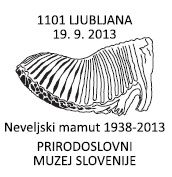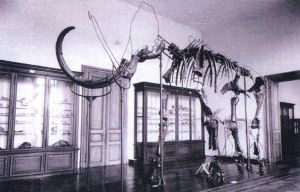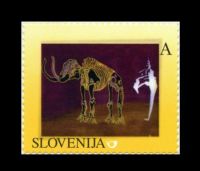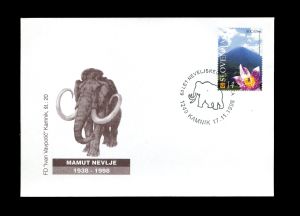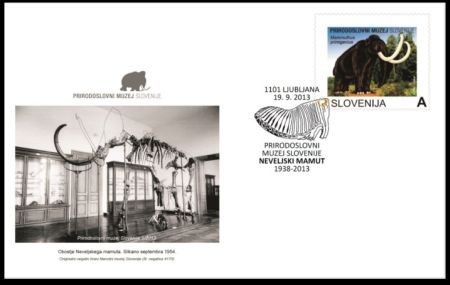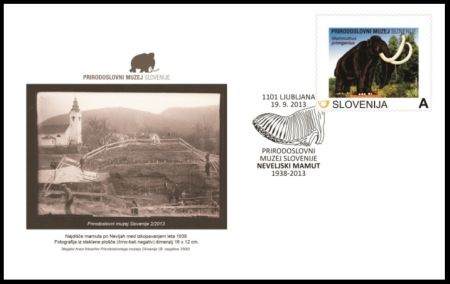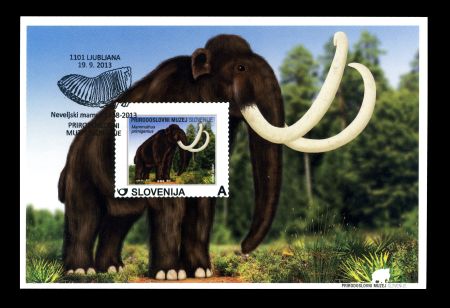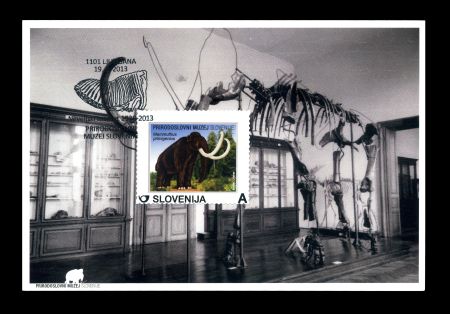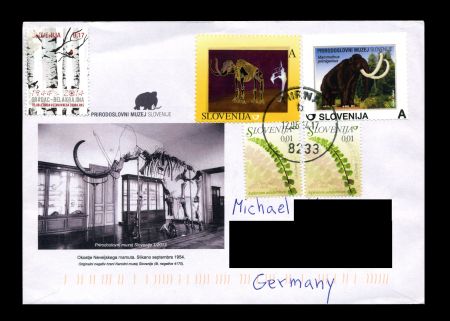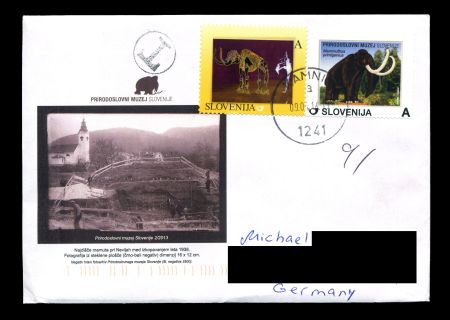Slovenia
2013
"75 years of the discovery of a mammoth in Nevlje by Kamnik"
| Issue Date |
19.09.2013 |
| ID |
Michel:
791 (frame)
Stanley
Gibbons: UPU:
Category: pR |
| Author |
Matjaz Učakar |
| Stamps in set |
1 |
| Value |
A - fossil of Mammoth
* A
- standard letter inside country - 0,29 EUR
|
| Size (width x height) |
|
| Layout |
|
| Variations
|
FDC x 2 MC x2 |
| Paper |
self adhesive
|
| Perforation |
|
| Print Technique |
|
| Printed by |
|
| Quantity |
|
| Issuing Authority |
Natural
History Museum of Slovenia
in Ljubljana |
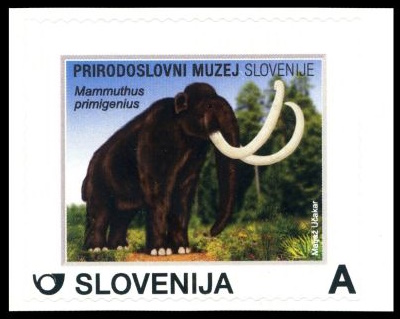
In order to commemorate "75
years since
discovery of a mammoth's
fossils in Nevlje by
Kamnik"
Natural
History Museum of Slovenia
in Ljubljana,
issued on 19.09.2013, self-adhesive personalized stamp, shows
reconstruction of the animals, which is on display in the museum.
Moreover, special Philatelic Exhibition
took place in the museum between 19.09.2013 and 31.12.2013.
Five frames, prepared by Matjaz
Učakar (the stamp designer) and Tone Simončič,
showed various philatelic items
related to
the animals of the Ice Age, which lived at
Neveljska (place
where fossils of the mammoth are found) , together with some
other stamps and covers shows
modern animals and plants typical for the area of Slovenia and
issued by the Post of Slovenia in last two decades.
Mammoth discovery by Kamnik
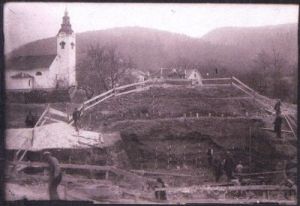
|
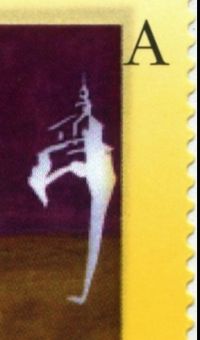
|
In
March and April 1938, an almost complete skeleton of a 40-year-old
woolly mammoth (Mammuthus primigenius), an antler of a reindeer
(Rangifer tarandus), an atlas of a polar fox (Alopex lagopus), and a
small Paleolithic tool made of almost black flint were found in Nevlje (Nevlje
ranks among the oldest settlements in the Kamnik region. The Parish
Church of Sv. Jurij was the original seat of the earliest Kamnik parish) by workers who built a
bridge across the Nevljica and deepened its bed. It was the first
discovered Paleolithic hunting settlement in the territory of the
present Slovenia and was dated to around 20,000 BP, the time of the
Gravettian culture in the latter half of the Würm period (the last
glaciation period). The excavations attracted domestic and
international public attention, researchers, and politicians. A bridge
built at this spot was named the Mammoth Bridge (Slovene: Mamutov
most). A pollen analysis was performed at the site for the first time
by Ana Tregubov-Budnar, the first Slovenian paleontologist. In 1944, she
attributed the pollen to the end of an interglacial period. Later, it
was shown by Alojz Šercelj that it actually belongs to the Würm
glaciation. The mammoth skeleton is one of the best preserved in Europe
and has become the symbol of the
Natural
History Museum of Slovenia
in Ljubljana,
where it is now on display.
Along
with the
National Museum of
Slovenia, which is located in the same building, the Natural
History Museum of Slovenia is Slovenia's oldest cultural
and scientific institution, originating as the Provincial Museum of
Carniola, which was established in 1821 and became the National Museum
in 1921. The museum, located in the town center of Ljubljana near
Tivoli Park, gained from the Austrian government at its establishment
the Žiga Zois
collection of books and minerals and the Count
Hohenwart collection of mollusk shells. It has a
dislocated unit, the Alpine
Botanical Garden Juliana, in Trenta.
The museum's geological-palaeontological collections include
fossils from various Slovene sites, including an almost complete
20,000-year-old
mammoth
skeleton found at Nevlje near Kamnik. Also of significance
are a 210 million-year-old 84-centimeter-long fish skeleton found in
the Triglav Mountains and a Miocene-era baleen whale skeleton found in
Slovenske Gorice.
One of the museum's founding collections was Baron Sigmund Zois's mineral
collection. Although it is an outstanding historical collection,
minerals are now exhibited as classified by modern methods according to
their internal structure, and among them is the mineral zoisite, named
after Zois. There are also two Biedermaier wooden tables that are
covered by tiles from Palnstorf's collection of minerals and rocks.
Hohenwart's collection of mollusk shells comprises about 5,000
specimens, dating from 1831 and originating mainly from the
Indo-Pacific. The insect collection of Ferdinand J. Schmidt includes
several interesting specimens, notably the "narrow-necked" blind cave
beetles (Leptodirus hochenwartii) that were
described in 1831 as the first cave insect. The plants and animals of
the mountains, marshes, and woods are shown in specialized dioramas.
Also on view are permanent bird, reptile, fish, mammal and skeleton
collections.
The Slovenian Wildlife Sound Archive is a collection of animal
sounds, mainly on Heteroptera and Cicadas, stored on digital and
analogue recording media.
Related
philatelic items:
Products
Last update 20.01.2018
Any feedback, comments or even complaints
are welcome: [email protected] (you
can email me on ENglish, DEutsch, or RUssian)




